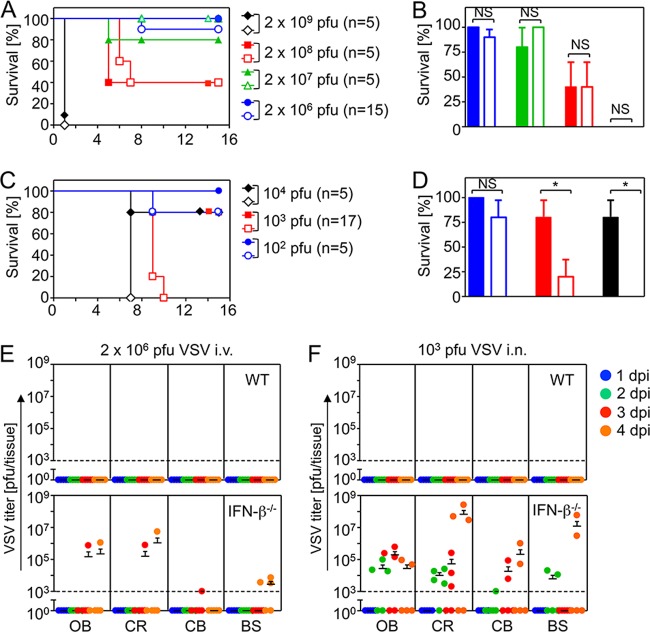FIG 4.
Upon i.n., but not i.v., challenge IFN-β-deficient mice show enhanced susceptibility to lethal VSV infection. (A) IFN-β−/− (open symbols) and C57BL/6 control mice (filled symbols) were i.v. infected with VSV at the indicated dosages, and survival was monitored. (B) No significant difference in the survival of infected WT and IFN-β−/− mice was observed at day 15 p.i. (C) Mice were i.n. infected with VSV at the indicated dosages, and survival was monitored. (D) At 15 days p.i., IFN-β−/− mice showed enhanced susceptibility to i.n. VSV infection when >103 PFU of VSV were applied. (E and F) To determine virus titers upon VSV infection, WT and IFN-β−/− mice were i.v. infected with 2 × 106 PFU (E) or i.n. infected with 103 PFU (F) of VSV. At 1, 2, 4, and 8 days p.i., the mice were sacrificed, and the virus titers in the olfactory bulbs (OB), cerebra (CR), cerebella (CB), and brain stems (BS) were determined based on plaque formation. Five mice per genotype and time point were analyzed.

